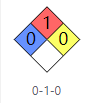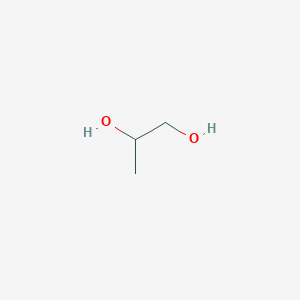
-
丙二醇
- names:
Propylene glycol
- CAS号:
57-55-6
MDL Number: MFCD00004539 - MF(分子式): C3H8O2 MW(分子量): 76.09
- EINECS:200-338-0 Reaxys Number:No data available
- Pubchem ID:1030 Brand:BIOFOUNT
| 货品编码 | 规格 | 纯度 | 价格 (¥) | 现价(¥) | 特价(¥) | 库存描述 | 数量 | 总计 (¥) |
|---|---|---|---|---|---|---|---|---|
| FF0482-5ml | 5ml | Standard for GC | ¥ 70.00 | ¥ 70.00 | 3-5days | ¥ 0.00 | ||
| JT26002-500ml | 500ml | AR,99% | ¥ 59.00 | ¥ 59.00 | 3-5days | ¥ 0.00 |
| 中文别名 | 丙二醇(57-55-6);1,2-丙二醇;1,2-二羟基丙烷;(±)-1,2-丙二醇;1,2-(RS)-丙二醇; 1,2-二羟基丙烷; |
| 英文别名 | Propylene glycol(57-55-6);1,2-Propanediol;(±)-1,2-Propanediol;1,2-(RS)-Propanediol; 1,2-Dihydroxypropane; |
| CAS号 | 57-55-6 |
| SMILES | CC(CO)O |
| Inchi | InChI = 1S / C3H8O2 / c1-3(5)2-4 / h3-5H,2H2,1H3 |
| InchiKey | DNIAPMSPPWPWGF-UHFFFAOYSA-N |
| 分子式 Formula | C3H8O2 |
| 分子量 Molecular Weight | 76.09 |
| 闪点 FP | 107.2±0.0°摄氏度 |
| 熔点 Melting point | -60°C |
| 沸点 Boiling point | 760毫米汞柱时为184.8±8.0°C |
| Polarizability极化度 | No data available |
| 密度 Density | 1.0±0.1克/厘米3 |
| 蒸汽压 Vapor Pressure | 25°C时0.2±0.8 mmHg |
| 溶解度Solubility | Soluble in acetone, chloroform, and ether |
| 性状 | 无色油或透明粘性液体 |
| 储藏条件 Storage conditions | 室内温度密封保存。 |
丙二醇(57-55-6,Propylene glycol)毒理性质:
| 生物 | 测试类型 | 路线 | 剂量 | 影响 | 参考 |
| Skin and Eye Irritation | eye /rabbit | 100 mg | mild | 19-Mar | |
| Skin and Eye Irritation | eye /rabbit | 500 mg/24H | mild | 19-Mar | |
| Skin and Eye Irritation | skin /child | 30%/96H-continuous | moderate | 19-Mar | |
| Skin and Eye Irritation | skin /human | 500 mg/7D | mild | 19-Mar | |
| Skin and Eye Irritation | skin /human | 104 mg/3D- intermittent | moderate | 19-Mar | |
| Skin and Eye Irritation | skin /human | 20% | 19-Mar | ||
| Skin and Eye Irritation | skin /man | 10%/2D | 19-Mar | ||
| Skin and Eye Irritation | skin /woman | 30%/96H open irritation test | mild | 19-Mar | |
| Mutation Data | Cytogenetic Analysis | subcutaneous/mouse | 8000 mg/kg | 19-Mar | |
| Mutation Data | Cytogenetic Analysis | fibroblast/hamster | 32 gm/L | 19-Mar | |
| Mutation Data | DNA inhibition | subcutaneous/mouse | 8000 mg/kg | 19-Mar | |
| Reproductive Effects | intraperitoneal/mouse | 100 mg/kg (11D pregnant) | Reproductive: Effects on fertility: Post- implantation mortality (e.g., dead and/or resorbed implants per total number of implants) | 19-Mar | |
| Reproductive Effects | intraperitoneal/mouse | 100 mg/kg (15D pregnant) | Reproductive: Effects on embryo or fetus: Fetotoxicity (except death, e.g., stunted fetus) | 19-Mar | |
| Acute Toxicity Data | In Vitro/Human, leukemia cells | Inhibitor Concentration (5 percent kill): >25000 mg/L/30M | In Vitro Toxicity Studies: Cell counting | 19-Mar | |
| Acute Toxicity Data | In Vitro/Human, liver tumor | Inhibitor Concentration (50 percent kill): 684 mmol/L/24H | In Vitro Toxicity Studies: Cell protein synthesis | 19-Mar | |
| Acute Toxicity Data | In Vitro/Human, lymphocyte | Inhibitor Concentration (30 percent kill): >200 mg/L/45H | In Vitro Toxicity Studies: Cell viability (dye exclusion): trypan blue assay etc. | 19-Mar | |
| Acute Toxicity Data | In Vitro/Human, lymphocyte | Inhibitor Concentration (50 percent kill): >200 mg/L/45H | In Vitro Toxicity Studies: Other assays | 19-Mar | |
| Acute Toxicity Data | In Vitro/Human, monocyte | Inhibitor Concentration (20 percent kill): >10000 µmol/L/24H | In Vitro Toxicity Studies: Cell viability (mitochondrial reductase assays): MTT, XTT, MTS, WSTs assays etc. | 19-Mar | |
| Acute Toxicity Data | In Vitro/Human, monocyte | Inhibitor Concentration (20 percent kill): 10 mmol/L/2H | In Vitro Toxicity Studies: Other assays | 19-Mar | |
| Acute Toxicity Data | In Vitro/Human, skin | Inhibitor Concentration (20 percent kill): 304.4 mg/L/21H | In Vitro Toxicity Studies: Cell viability (mitochondrial reductase assays): MTT, XTT, MTS, WSTs assays etc. | 19-Mar | |
| Acute Toxicity Data | In Vitro/Human, skin | Inhibitor Concentration (50 percent kill): >2000 µmol/L/48H | In Vitro Toxicity Studies: Cell viability (mitochondrial reductase assays): MTT, XTT, MTS, WSTs assays etc. | 19-Mar | |
| Acute Toxicity Data | In Vitro/Human, skin | Inhibitor Concentration (50 percent kill): >2000 µmol/L/48H | In Vitro Toxicity Studies: Cell metabolic activity: Alamar Blue assay etc. | 19-Mar | |
| Acute Toxicity Data | In Vitro/Human, skin | Inhibitor Concentration (30 percent kill): >2000 µmol/L/48H | In Vitro Toxicity Studies: Cell viability (mitochondrial reductase assays): MTT, XTT, MTS, WSTs assays etc. | 19-Mar | |
| Acute Toxicity Data | In Vitro/Human, skin | Inhibitor Concentration (30 percent kill): >2000 µmol/L/48H | In Vitro Toxicity Studies: Cell metabolic activity: Alamar Blue assay etc. | 19-Mar | |
| Acute Toxicity Data | In Vitro/jda | Inhibitor Concentration (50 percent kill): 50416 mg/L/1H | In Vitro Toxicity Studies: Cell viability (mitochondrial reductase assays): MTT, XTT, MTS, WSTs assays etc. | 19-Mar | |
| Acute Toxicity Data | In Vitro/jzx | Inhibitor Concentration (50 percent kill): 25.3 pph/60M | In Vitro Toxicity Studies: Other assays | 19-Mar | |
| Acute Toxicity Data | In Vitro/Mouse, fibroblast | Inhibitor Concentration (50 percent kill): >10000 µmol/L/24H | In Vitro Toxicity Studies: Cell viability (lysosomal damage): neutral red assay etc. | 19-Mar | |
| Acute Toxicity Data | In Vitro/Rabbit, ocular | Inhibitor Concentration (50 percent kill): 0.07 gm/L/10M | In Vitro Toxicity Studies: Cell Viability (cell death), unspecified assay | 19-Mar | |
| Acute Toxicity Data | inhalation/rat | lethal concentration (50 percent kill): >44.9 gm/m3/4H | 19-Mar | ||
| Acute Toxicity Data | inhalation/rat | lowest published toxic concentration: 44.9 gm/m3/4H | Blood: Hemorrhage | 19-Mar | |
| Acute Toxicity Data | intramuscular/rabbit | lowest published lethal dose: 6300 mg/kg | Behavioral: Somnolence (general depressed activity); Behavioral: Coma; Lung, Thorax, or Respiration: Respiratory stimulation | 19-Mar | |
| Acute Toxicity Data | intramuscular/rabbit | lowest published lethal dose: 6300 mg/kg | Behavioral: Ataxia; Behavioral: Tetany; Lung, Thorax, or Respiration: Respiratory depression | 19-Mar | |
| Acute Toxicity Data | intramuscular/rat | lethal dose (50 percent kill): 20000 mg/kg | Behavioral: Ataxia; Behavioral: Tetany; Lung, Thorax, or Respiration: Respiratory depression | 19-Mar | |
| Acute Toxicity Data | intramuscular/rat | lethal dose (50 percent kill): 14 gm/kg | 19-Mar | ||
| Acute Toxicity Data | intraperitoneal/mouse | lethal dose (50 percent kill): 9718 mg/kg | Lung, Thorax, or Respiration: Chronic pulmonary edema or congestion; Kidney, Ureter, and Bladder: Changes in both tubules and glomeruli; Blood: Changes in spleen | 19-Mar | |
| Acute Toxicity Data | intraperitoneal/mouse | lethal dose (50 percent kill): 11400 mg/kg | Behavioral: Ataxia; Behavioral: Tetany; Lung, Thorax, or Respiration: Respiratory depression | 19-Mar | |
| Acute Toxicity Data | intraperitoneal/rat | lowest published toxic dose: 19500 mg/kg | Behavioral: Ataxia; Behavioral: Tetany; Lung, Thorax, or Respiration: Respiratory depression | 19-Mar | |
| Acute Toxicity Data | intraperitoneal/rat | lethal dose (50 percent kill): 6660 mg/kg | 19-Mar | ||
| Acute Toxicity Data | intravenous/chicken | lowest published lethal dose: 27 gm/kg | Vascular: Other changes | 19-Mar | |
| Acute Toxicity Data | intravenous/Dog | lethal dose (50 percent kill): 26000 mg/kg | Behavioral: Ataxia; Behavioral: Tetany; Lung, Thorax, or Respiration: Respiratory depression | 19-Mar | |
| Acute Toxicity Data | intravenous/Dog | lethal dose (50 percent kill): 26 gm/kg | 19-Mar | ||
| Acute Toxicity Data | intravenous/mouse | lethal dose (50 percent kill): 6630 mg/kg | 19-Mar | ||
| Acute Toxicity Data | intravenous/mouse | lethal dose (50 percent kill): 8000 mg/kg | Behavioral: Ataxia; Behavioral: Tetany; Lung, Thorax, or Respiration: Respiratory depression | 19-Mar | |
| Acute Toxicity Data | intravenous/rabbit | lowest published lethal dose: 4200 mg/kg | Behavioral: Ataxia; Behavioral: Tetany; Lung, Thorax, or Respiration: Respiratory depression | 19-Mar | |
| Acute Toxicity Data | intravenous/rabbit | lethal dose (50 percent kill): 6500 mg/kg | 19-Mar | ||
| Acute Toxicity Data | intravenous/rat | lethal dose (50 percent kill): 6800 mg/kg | Behavioral: Ataxia; Behavioral: Tetany; Lung, Thorax, or Respiration: Respiratory depression | 19-Mar | |
| Acute Toxicity Data | intravenous/rat | lethal dose (50 percent kill): 6423 mg/kg | 19-Mar | ||
| Acute Toxicity Data | oral/child | lowest published toxic dose: 79 gm/kg/56W- intermittent | Brain and Coverings: Changes in surface EEG; Behavioral: General anesthetic; Behavioral: Convulsions or effect on seizure threshold | 19-Mar | |
| Acute Toxicity Data | oral/Dog | lethal dose (50 percent kill): 22 gm/kg | 19-Mar | ||
| Acute Toxicity Data | oral/Dog | lethal dose (50 percent kill): 22000 mg/kg | Behavioral: Ataxia; Behavioral: Tetany; Lung, Thorax, or Respiration: Respiratory depression | 19-Mar | |
| Acute Toxicity Data | oral/guinea pig | lethal dose (50 percent kill): 19000 mg/kg | Behavioral: Ataxia; Behavioral: Tetany; Lung, Thorax, or Respiration: Respiratory depression | 19-Mar | |
| Acute Toxicity Data | oral/guinea pig | lethal dose (50 percent kill): 18350 mg/kg | 19-Mar | ||
| Acute Toxicity Data | oral/mouse | lethal dose (50 percent kill): 22 gm/kg | 19-Mar | ||
| Acute Toxicity Data | oral/mouse | lethal dose (50 percent kill): 20300 mg/kg | Behavioral: Ataxia; Behavioral: Tetany; Lung, Thorax, or Respiration: Respiratory depression | 19-Mar | |
| Acute Toxicity Data | oral/quail | lethal dose (50 percent kill): >2080 mg/kg | 19-Mar | ||
| Acute Toxicity Data | oral/rabbit | lowest published lethal dose: 20000 mg/kg | Behavioral: Ataxia; Behavioral: Tetany; Lung, Thorax, or Respiration: Respiratory depression | 19-Mar | |
| Acute Toxicity Data | oral/rabbit | lethal dose (50 percent kill): 18500 mg/kg | 19-Mar | ||
| Acute Toxicity Data | oral/rat | lethal dose (50 percent kill): 20 gm/kg | 19-Mar | ||
| Acute Toxicity Data | parenteral/infant | lowest published toxic dose: 10 gm/kg/3D- continuous | Nutritional and Gross Metabolic: Other changes | 19-Mar | |
| Acute Toxicity Data | skin/rabbit | lethal dose (50 percent kill): 20800 mg/kg | 19-Mar | ||
| Acute Toxicity Data | skin/rabbit | lethal dose (50 percent kill): 20800 mg/kg | Behavioral: Ataxia; Behavioral: Tetany; Lung, Thorax, or Respiration: Respiratory depression | 19-Mar | |
| Acute Toxicity Data | subcutaneous/guinea pig | lowest published lethal dose: 15500 mg/kg | Behavioral: Ataxia; Behavioral: Tetany; Lung, Thorax, or Respiration: Respiratory depression | 19-Mar | |
| Acute Toxicity Data | subcutaneous/guinea pig | lowest published lethal dose: 15500 mg/kg | 19-Mar | ||
| Acute Toxicity Data | subcutaneous/mouse | lethal dose (50 percent kill): 17370 mg/kg | Behavioral: Change in motor activity (specific assay); Behavioral: Muscle contraction or spasticity; Lung, Thorax, or Respiration: Cyanosis | 19-Mar | |
| Acute Toxicity Data | subcutaneous/mouse | lethal dose (50 percent kill): 17400 mg/kg | Behavioral: Ataxia; Behavioral: Tetany; Lung, Thorax, or Respiration: Respiratory depression | 19-Mar | |
| Acute Toxicity Data | subcutaneous/rat | lethal dose (50 percent kill): 28000 mg/kg | Behavioral: Ataxia; Behavioral: Tetany; Lung, Thorax, or Respiration: Respiratory depression | 19-Mar | |
| Acute Toxicity Data | subcutaneous/rat | lethal dose (50 percent kill): 22500 mg/kg | 19-Mar | ||
| Acute Toxicity Data | Tank with water/Zebrafish | toxic concentration: 6.25 mL/L/66H | Behavioral: Change in motor activity (specific assay) | 19-Mar | |
| Other Multiple Dose Data | inhalation/Dog | lowest published toxic concentration: 5 gm/m3/36M/28D- intermittent | Blood: Changes in erythrocyte (RBC) count | 19-Mar | |
| Other Multiple Dose Data | inhalation/rat | lowest published toxic concentration: 30 gm/m3/2H/28D- intermittent | Lung, Thorax, or Respiration: Other changes | 19-Mar | |
| Other Multiple Dose Data | inhalation/rat | lowest published toxic concentration: 2180 mg/m3/6H/90D- intermittent | Behavioral: Food intake (animal); Endocrine: Changes in spleen weight; Biochemical: Enzyme inhibition, induction, or change in blood or tissue levels: Dehydrogenases | 19-Mar | |
| Other Multiple Dose Data | intravenous/woman | lowest published toxic dose: 5167 mg/kg/13D- continuous | Nutritional and Gross Metabolic: Changes in: Metabolic acidosis | 19-Mar | |
| Other Multiple Dose Data | oral/Dog | lowest published toxic dose: 3650 mg/kg/2Y- intermittent | Blood: Normocytic anemia; Blood: Other hemolysis with or without anemia | 19-Mar | |
| Other Multiple Dose Data | oral/rat | lowest published toxic dose: 84 mL/kg/30D- continuous | Blood: Changes in serum composition (e.g. TP, bilirubin, cholesterol); Blood: Changes in leukocyte (WBC) count; Biochemical: Enzyme inhibition, induction, or change in blood or tissue levels: Multiple enzyme effects | 19-Mar | |
| Other Multiple Dose Data | oral/rat | lowest published toxic dose: 88269 mg/kg/30D- intermittent | Endocrine: Hyperglycemia; Biochemical: Enzyme inhibition, induction, or change in blood or tissue levels: Phosphatases; Biochemical: Enzyme inhibition, induction, or change in blood or tissue levels: Transaminases | 19-Mar | |
| Other Multiple Dose Data | skin/human | lowest published toxic dose: 5 mg/kg/7D- intermittent | Skin: After topical application: Primary irritation | 19-Mar | |
| Other Multiple Dose Data | skin/human | lowest published toxic dose: 4.5 mg/kg/3D- intermittent | Skin: After topical application: Primary irritation | 19-Mar | |
| Other Multiple Dose Data | skin/man | lowest published toxic dose: 0.03 mL/kg/22D- intermittent | Skin: After topical application: Cutaneous sensitization (experimental) | 19-Mar | |
| Other Multiple Dose Data | skin/mouse | lowest published toxic dose: 1284800 mg/kg/2Y- intermittent | Skin and Appendages: Tumors | 19-Mar |
丙二醇(57-55-6,Propylene glycol)实验注意事项:
1.使用57-55-6实验前需戴好防护眼镜,穿戴防护服和口罩,佩戴手套,避免与皮肤接触。
2.使用57-55-6实验过程中如遇到有毒或者刺激性物质及有害物质产生,必要时实验操作需要手套箱内完成以免对实验人员造成伤害。
3.取样品57-55-6的移液枪头需及时更换,必要时为避免交叉污染尽可能选择滤芯吸头。
4.称量药品时选用称量纸,并无风处取药和称量以免扬撒,试剂的容器使用前务必确保干净,并消毒。
5.取药品57-55-6时尽量采用多个药勺分别使用,使用后清洗干净。
6.实验后产生的废弃物需分类存储,并交于专业生物废气物处理公司处理,以免造成环境污染。
大规格定制:定制产品请将信息发送至sales@bio-fount.com。
Experimental considerations:
1. Wear protective glasses, protective clothing and masks, gloves, and avoid contact with the skin during the experiment.
2. The waste generated after the experiment needs to be stored separately, and handed over to a professional biological waste gas treatment company to avoid environmental pollution.
Tags:丙二醇试剂,丙二醇杂质,丙二醇中间体,丙二醇合成,丙二醇闪点,丙二醇旋光度,丙二醇溶解度,丙二醇密度,丙二醇购买,丙二醇MSDS,
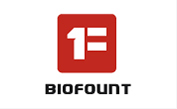
| 产品说明 | 丙二醇(57-55-6)是一种少数族醇;丙二醇是一种吸收水分的合成液体物质;丙二醇溶解度,丙二醇MSDS,丙二醇结构式等其他参数详见主页。 |
| Introduction | 丙二醇(57-55-6,Propylene glycol)is an aliphatic alcohol and frequently used as an excipient in many drug formulations to increase the solubility and stability of drugs. |
| Application1 | |
| Application2 | 可以作为溶剂, 有机合成, 抗冻剂, 增塑剂, 杀菌剂 |
| Application3 | 气相色谱分析标准 |
丙二醇(57-55-6,Propylene glycol)药理学:
丙二醇是一种吸收水分的合成液体物质。丙二醇还用于制备聚酯化合物,并用作除冰溶液的基础。当泄漏可能导致与食物接触时,丙二醇被化学,食品和制药行业用作防冻剂??。美国食品药品监督管理局(FDA)已将丙二醇列为“通常被认为是安全的”食品添加剂。用于吸收多余的水并保持某些药品,化妆品或食品中的水分。它是食用色素和调味料以及油漆和塑料工业的溶剂。丙二醇还用于制造人造烟或雾,用于消防培训和戏剧作品中。
丙二醇的其他名称是1,2-二羟基丙烷,1,2-丙二醇,甲基乙二醇和三甲基乙二醇。丙二醇在室温下为澄清,无色,略带糖浆的液体。它可能以蒸气形式存在于空气中,尽管必须加热或快速摇动丙二醇以产生蒸气。丙二醇几乎无味和无味。 丙二醇是作为透明,无色和吸湿性液体存在的丙二醇,由其中位置1和2上的氢被羟基取代的丙烷组成。丙二醇在药物和许多其他工业应用中用作有机溶剂和稀释剂。 丙二醇(1,2-丙二醇)是一种有机化合物(一种二醇醇),通常是无味,无味,无色的透明油状液体,具有吸湿性,可与水,丙酮和氯仿混溶。它是由环氧丙烷水合制得的。丙二醇用作静脉内,口服和局部药物制剂的溶剂,通常被认为是安全的。但是,大剂量服用可能会产生毒性,尤其是在短时间内服用时。静脉注射劳拉西m含有最多量的常用药物丙二醇。在具有正常肝肾功能的成年人中,丙二醇的终末半衰期为1. 4至3. 3小时。
丙二醇被肝脏代谢形成乳酸,乙酸盐和丙酮酸。未代谢的药物主要以葡糖苷酸结合物的形式排泄到尿液中,大约12%至45%的尿素不变地排泄。肾脏清除率随给药剂量的增加而降低(剂量为5克/天的剂量为390毫升/分钟/ 173平方米,剂量为21克/天的剂量仅为144毫升/分钟/ 173平方米)。这些数据表明,由于药物的近端肾小管分泌饱和,在较高丙二醇剂量下肾清除率下降。由于尚未定义丙二醇的可接受水平,因此尚不清楚丙二醇水平的临床意义。世界卫生组织(WHO)建议,当用作食品添加剂时,丙二醇的最大消费量为25 mg / kg /天(75 kg男性为1.8 g /天),但该限量并未解决其用途,因为药物溶剂。文献中不建议使用丙二醇静脉治疗的最大剂量。中毒的发生剂量远高于WHO的剂量限值,并且是药物暴露所致。丙二醇的毒性包括血清高渗性,乳酸性酸中毒和肾衰竭。已经提出,近端肾小管坏死是丙二醇引起的急性肾损伤的原因。沿着这些路线,近端小管细胞损伤发生在暴露于丙二醇的培养人细胞中。急性肾小管坏死伴有静脉注射丙二醇毒性 丙二醇的毒性包括血清高渗性,乳酸性酸中毒和肾衰竭。已经提出,近端肾小管坏死是丙二醇引起的急性肾损伤的原因。沿着这些路线,近端小管细胞损伤发生在暴露于丙二醇的培养人细胞中。急性肾小管坏死伴有静脉注射丙二醇毒性 丙二醇的毒性包括血清高渗性,乳酸性酸中毒和肾衰竭。已经提出,近端肾小管坏死是丙二醇引起的急性肾损伤的原因。沿着这些路线,近端小管细胞损伤发生在暴露于丙二醇的培养人细胞中。急性肾小管坏死伴有静脉注射丙二醇毒性劳拉西m和甲氧 苄氨磺胺甲基恶唑。丙二醇引起的中毒还可以模仿败血症或全身性炎症反应综合征(SIRS)。如果怀疑患有败血症且培养阴性的患者暴露于高剂量劳拉西m或其他含有这种溶剂的药物中,则应评估其丙二醇毒性。(PMID:17555487)。
丙二醇(57-55-6,Propylene glycol)物理属性:
|
物理特性 |
值 |
单位 |
温度(摄氏度) |
资源 |
|
Melting Point |
-6.00E+01 |
deg C |
|
EXP |
|
Boiling Point |
187.6 |
deg C |
|
EXP |
|
pKa Dissociation Constant |
14.9 |
(none) |
|
EXP |
|
log P (octanol-water) |
-0.92 |
(none) |
|
EXP |
|
Water Solubility |
1.00E+06 |
mg/L |
20 |
EXP |
|
Vapor Pressure |
0.129 |
mm Hg |
25 |
EXP |
|
Henry's Law Constant |
1.29E-08 |
atm-m3/mole |
25 |
EST |
|
Atmospheric OH Rate Constant |
1.20E-11 |
cm3/molecule-sec |
25 |
EXP |
| 警示图 | |
| 危险性 | warning |
| 危险性警示 | 有机化合物; 溶剂; 食物毒素;代谢物 家庭毒素;工业/工作场所毒素;合成化合物 食品添加剂毒素, |
| 安全声明 | H303吞入可能有害+H313皮肤接触可能有害+H333吸入可能对身体有害 |
| 安全防护 | P264处理后彻底清洗+P280戴防护手套/穿防护服/戴防护眼罩/戴防护面具+P305如果进入眼睛+P351用水小心冲洗几分钟+P338取出隐形眼镜(如果有)并且易于操作,继续冲洗+P337如果眼睛刺激持续+P313获得医疗建议/护理 |
| 备注 | 避免吸入,误食以及与皮肤接触.注意:可能刺激皮肤和眼睛,刺激肺,眼睛,皮肤 |
丙二醇(57-55-6,Propylene glycol)危害标识:
|
NFPA 704钻石 |
|
|
NFPA健康等级 |
0 - Materials that, under emergency conditions, would offer no hazard beyond that of ordinary combustible materials. |
|
NFPA防火等级 |
1 - Materials that must be preheated before ignition can occur. Materials require considerable preheating, under all ambient temperature conditions, before ignition and combustion can occur. |
|
NFPA不稳定等级 |
0 - Materials that in themselves are normally stable, even under fire conditions. |
| De Cock RF, et al. Low but inducible contribution of renal elimination to clearance of propylene glycol in preterm and term neonates. Ther Drug Monit. 2014 Jun;36(3):278-87. |
丙二醇(57-55-6,Propylene glycol)参考文献:
1.比较四种冷冻剂和两种最佳防冻剂对冷冻的Nguni精子的组合,并借助计算机辅助精子分析进行评估。
Seshoka MM1, Mphaphathi ML2, Nedambale TL3. Cryobiology. 2016 Apr 5. pii: S0011-2240(16)30039-6. doi: 10.1016/j.cryobiol.2016.04.001. [Epub ahead of print]
Cryopreservation has been reported to damage approximately 40-50% of viable sperm in bull semen. The present study was undertaken to assess the cryo-effectiveness of glycerol (GLY), ethylene glycol (EG), dimethyl sulfoxide (DMSO) and propylene glycol (PND) as cryoprotectant during the cryopreservation of Nguni bull semen. Semen was collected from 18 Nguni bulls and evaluated macroscopically and microscopically for sperm parameters. Thereafter, the semen samples were diluted with egg-yolk citrate extender supplemented with either 12% GLY or DMSO or EG or PND cryoprotectant. Semen samples were loaded into straws and placed into a controlled rate programmable freezer and stored in a liquid nitrogen tank. Following semen thawing, artificial insemination (AI) was done on synchronized Nguni cows. The in vitro fertilization (IVF) was conducted on cow's oocytes to test the fertilizing ability. Data was analyzed with the aid of ANOVA. A significant difference (p < 0.
2.使用重组大肠杆菌从d-葡萄糖,1-鼠李糖和甘油发酵生产1-丙醇。
Matsubara M1, Urano N1, Yamada S1, Narutaki A1, Fujii M1, Kataoka M2. J Biosci Bioeng. 2016 Apr 9. pii: S1389-1723(16)30033-0. doi: 10.1016/j.jbiosc.2016.03.011. [Epub ahead of print]
Fermentative production of 1-propanol, which is one of the promising precursors of polypropylene production, from d-glucose, l-rhamnose and glycerol using metabolically engineered Escherichia coli was examined. To confer the ability to produce 1-propanol from 1,2-propanediol (1,2-PD) in recombinant E. coli, a part of the pdu regulon including the diol dehydratase and the propanol dehydrogenase genes together with the adenosylcobalamin (AdoCbl) regeneration enzyme genes of Klebsiella pneumoniae was cloned, and an expression vector for these genes (pRSF_pduCDEGHOQS) was constructed. Recombinant E. coli harboring pRSF_pduCDEGHOQS with 1,2-PD synthetic pathway (pKK_mde) genes, which was constructed in our previous report (Urano et al., Appl. Microbiol. Biotechnol., 99, 2001-2008, 2015), produced 16.1 mM of 1-propanol from d-glucose with a molar yield of 0.36 mol/mol after 72 h cultivation. 29.9 mM of 1-propanol was formed from l-rhamnose with a molar yield of 0.
3.生命早期暴露于电子烟的小鼠的额叶皮层转录组分析。
Lauterstein DE1, Tijerina PB2, Corbett K3, Akgol Oksuz B4, Shen SS5,6,7, Gordon T8, Klein CB9, Zelikoff JT10. Int J Environ Res Public Health. 2016 Apr 12;13(4). pii: E417. doi: 10.3390/ijerph13040417.
Electronic cigarettes (e-cigarettes), battery-powered devices containing nicotine, glycerin, propylene glycol, flavorings, and other substances, are increasing in popularity. They pose a potential threat to the developing brain, as nicotine is a known neurotoxicant. We hypothesized that exposure to e-cigarettes during early life stages induce changes in central nervous system (CNS) transcriptome associated with adverse neurobiological outcomes and long-term disease states. To test the hypothesis, pregnant C57BL/6 mice were exposed daily (via whole body inhalation) throughout gestation (3 h/day; 5 days/week) to aerosols produced from e-cigarettes either with nicotine (13-16 mg/mL) or without nicotine; following birth, pups and dams were exposed together to e-cigarette aerosols throughout lactation beginning at postnatal day (PND) 4-6 and using the same exposure conditions employed during gestational exposure. Following exposure, frontal cortex recovered from ~one-month-old male and female offspring were excised and analyzed for gene expression by RNA Sequencing (RNA-Seq).
4.Santosomes作为天然有效的载体,可提高体内和体外藻蓝蛋白的再上皮能力。
Castangia I1, Manca ML2, Caddeo C1, Bacchetta G3, Pons R4, Demurtas D5, Diez-Sales O6, Fadda AM1, Manconi M1. Eur J Pharm Biopharm. 2016 Apr 1. pii: S0939-6411(16)30123-0. doi: 10.1016/j.ejpb.2016.03.033. [Epub ahead of print]
New biocarriers, named santosomes, were formulated using Santolina insularis essential oil and hydrogenated phosphatidylcholine. They were modified by adding propylene glycol, a hydrophylic penetration enhancer, and loaded with phycocyanin, a protein found in cyanobacteria, which possesses antioxidant and antiinflammatory properties. The essential oil was expected to modify the bilayer structure and improve the delivery and efficacy of the protein due to a synergistic effect of the phospholipid and Santolina insularis terpenes. Santosomes were small in size (∼118 nm), unilamellar and with polyhedral shape. SAXS patterns showed that phycocyanin strongly interacted with the polar heads of the vesicle bilayer. Phycocyanin-loaded vesicles did not show any toxic effect in vitro: cell viability was ∼100% in endothelial cells and ∼120% in keratinocytes, at all the concentrations tested. In addition, phycocyanin-loaded vesicles protected the cells against free radical damage.
Ren 化学品安全技术说明书 | 版本:1.0 | |||
按照GB/T16483、GB/T17519编制 | 修订日期:10.07.2019 | |||
打印日期:19.02.2020 | ||||
版权所有:范德(北京)生物科技有限责任公司 | 最初编制日期:25.05.2017 | |||
公司网站:WWW.BIO-FOUNT.COM | SDS编号:BIOFOUNT-JT26002 | |||
版权所有:BIOFOUNT BEIJING BIO TECH CO.,LTD | 产品编号:JT26002 | |||
1,2-丙二醇 | ||||
说明书目录 | ||||
第1部分 | 第2部分 | 危险性概述 | ||
第3部分 | 成分/组成信息 | 第4部分 | 急救措施 | |
第5部分 | 消防措施 | 第6部分 | 泄露应急处理 | |
第7部分 | 操作处置与储存 | 第8部分 | 接触控制/个体防护 | |
第9部分 | 理化性质 | 第10部分 | 稳定性和反应性 | |
第11部分 | 毒理学信息 | 第12部分 | 生态学危害信息 | |
第13部分 | 废弃处置 | 第14部分 | 运输信息 | |
第15部分 | 法律法规信息 | 第16部分 | 其他补充信息 | |
第1部分:化学品及企业标识 | ||||
1.1 产品标识 | ||||
1,2-丙二醇 | ||||
ENGLISH NAME: | 1,2-Propanediol | |||
JT26002 | ||||
BIOFOUNT | ||||
57-55-6 | ||||
1.2 安全技术说明书提供者的详情 | ||||
制造商或供应商名称: | ||||
制造地址: | 59 KANGTAI AVENUE BINHAI NEW DISTRICT TIANJIN 300450 TIANJIN CHINA 范德(天津)生物科技有限责任公司 天津市滨海新区康泰大道59号九州通绿谷健康产业园 邮政编码:300450 | |||
电话号码: | ||||
1.3 应急咨询电话 | ||||
紧急联系电话: | ||||
1.4 物质或混合物的推荐用途和限制用途 | ||||
已确认的各用途: | 仅用于科学研发,不作为药品、家庭或其它用途。 | |||
第2部分:危险性概述 | ||||
2.1 GHS危险性类别 | ||||
暂无数据 | ||||
2.2 GHS 标签要素,包括防范说明 | ||||
象形图 | ||||
暂无数据 | ||||
暂无数据 | ||||
暂无数据 | ||||
警告申明 | ||||
避免吸入,误食以及与皮肤接触 | ||||
暂无数据 | ||||
事故响应 | ||||
1.化学品使用过程中,当出现事故或者有紧急情况发生时,当事人应第一时间向应急小组负责人汇报后,由应急小组采取措施防止事态扩大。2.应急小组对受害人采取救护措施。 | ||||
密封保存。 | ||||
废弃处置 | ||||
暂无数据 | ||||
2.3 物理和化学危险 | ||||
暂无数据 | ||||
2.4 健康危害 | ||||
暂无数据 | ||||
2.5 环境危害 | ||||
暂无数据 | ||||
2.6 其它危害物 | ||||
暂无数据 | ||||
第3部分:成分/组成信息 | ||||
物质/混合物 | 暂无数据 | |||
3.1 物 质 | ||||
C3H8O2 | ||||
76.09 | ||||
110-91-8 | ||||
EC-编号 | 200-338-0 | |||
根据相应法规,无需披露具体组份。 | ||||
第4部分:急救措施 | ||||
4.1 必要的急救措施描述 | ||||
吸入 | ||||
立即将患者移至空气新鲜处,发现呼吸困难时,必须立即采取吸氧处理,停止呼吸时采取人工呼吸。同时联系及时就医。 | ||||
皮肤接触 | ||||
立即脱去或者剪去污染的衣物,迅速用大量的流动清水冲10-20分钟甚至更长时间后,赴医院就医。 | ||||
眼睛接触 | ||||
立即用大量的流动清水冲10-20分钟后赴医院就医处理。 | ||||
食入 | ||||
误食化学物品后,应立即采取措施进行催吐。1.若误食化学品呈酸性,则可服用大量牛奶和水,促使食如折呕吐。2.若误食化学品呈碱性,则可服用大量牛奶、清水和醋,促使其呕吐,紧急处理后,应及时送至医院进行治疗(仅供参考)。食如者昏迷状态下禁止催吐,以免造成窒息。 | ||||
4.2 最重要的症状和健康影响 | ||||
最重要的已知症状及作用已在标签(参见章节2.2)和/或章节11中介绍 | ||||
暂无数据 | ||||
4.4 对医生的特别提示 | ||||
暂无数据 | ||||
第5部分:消防措施 | ||||
5.1 灭火介质 | ||||
采用泡沫灭火器、二氧化碳灭火器,避免造成二次污染发生。 | ||||
5.2 源于此物质或混合物的特别的危害 | ||||
暂无数据 | ||||
5.3 灭火注意事项及保护措施 | ||||
小规模着火需戴好口罩,防止有毒气体吸入。火灾发生时及时启动应急相应系统撤离至上风口处,并联系当地消防部门灭火。 | ||||
第6部分:泄露应急处理 | ||||
1.泄露后首先启动应急相应系统2.泄露处理前,需穿戴好安全安全防护鞋、穿戴好安全防护手套(强酸性物质需穿戴防酸碱手套)、根据吸入危险性穿戴相应防护面罩。 有关个人防护,请看第8部分。 | ||||
6.2 环境保护措施 | ||||
参照《范德生物化学废弃物处理方法》处理,防止对环境造成危害,处理后交由有资质的废弃物处理结构进行处理,以免造成环境污染。 | ||||
参照《范德生物化学品废弃物处理方法》对泄露的化学品进行处理,处理前需用化学品吸附岩棉对泄露区域进行围挡,形成“围堰”防止泄露扩大。 | ||||
6.4 参考其他部分 | ||||
丢弃处理请参阅第13节。 | ||||
第7部分:操作处置与储存 | ||||
7.1 安全操作的注意事项 | ||||
使用过程请穿戴好口罩,手套等防护用品,避免与皮肤接触、吸入、误食危险。 有关预防措施,请参见章节2.2。 | ||||
7.2 安全储存的条件,包括任何不兼容性 | ||||
暂时无法提供详细数据,尽可能避免与其他化合物混合存储,避光、通风处存储。 | ||||
第8部分:接触控制/个体防护 | ||||
8.1 控制参数 | ||||
暂无数据 | ||||
8.2 暴露控制 | ||||
适当的技术控制 | ||||
暂无数据 | ||||
个体防护装备 | ||||
一般情况下穿戴安全防护眼镜即可,如有飞溅液体、粉末产生时,请佩戴防溅面罩进行防护。穿戴的防护用品需取得如:GB、NIOSH (美国) 或 EN 166(欧盟) 等相关认证。 | ||||
手套脱去注意事项:手套在使用前必须进行检查,请使用正确的方法脱除手套(不接触手套外部表面),避免身体任何皮肤部位接触到此产品。根据相关法律法规和实验室管理规范制度,手套使用过后,请将被污染的手套谨慎处理,工作后清洗并吹干双手。 所选择的保护手套必须符合法规《劳动防护用品配备标准》、(EU)2016/425以及从此类法规衍生出来的EN 374标准规范。 完全接触保护要求: 手套材料:丁腈橡胶 手套最小的层厚度:0.11 MM 手套溶剂渗透时间:480 分钟 飞溅保护要求: 材料:丁腈橡胶 最小的层厚度 0.11 MM 溶剂渗透时间:480 分钟 如果以溶剂形式应用或与其它物质混合应用,或在不同于《劳动防护用品配备标准》,EN 374规定的条件下应用,请与EC批准的手套的供应商联系。该条只是作为推荐性建议,如遇特殊情况,务必请熟悉该产品属性的专家,选取相关防护用品。此条建议不应该被认定为适应所有特殊条件防护,请根据所处工作条件请求专业工程师指导采取相应防护措施。 | ||||
选择身体部分的防护措施,需要根据危险物质的类型、浓度、量以及特定的工作环境。身体部分防护设备、防护服的类型,必须根据使用者工作场所中的危险物质的浓度、数量进行选择。 | ||||
一般情况下穿戴普通的医用口罩保护呼吸系统即可。有酸雾产生式活性炭类口罩起不到防护作用,如需对粉尘造成损害进行防护时,请采用N95型(US)或P1型(EN 143)类口罩或者防尘面具。特殊情况下使用自吸式呼吸器时,使用的呼吸器必须对呼吸器密闭性、空气供应系统、供气压进行测试,当然呼吸器需通过强制认证标准如:GB、NIOSH(US)、CEN(EU)。 | ||||
环境暴露的控制 | ||||
不要让产品进入下水道。 | ||||
第9部分:理化特性 | ||||
9.1 基本的理化特性的信息 | ||||
形状:暂无数据 | ||||
颜色:暂无数据 | ||||
气味 | 暂无数据 | |||
气味阈值 | 暂无数据 | |||
暂无数据 | ||||
-60 °CJ&K Scientific932144 | ||||
初沸点和沸程 | 188.2°C | |||
闪点 | 99℃ | |||
蒸发速率 | 暂无数据 | |||
易燃性(固体,气体) | 暂无数据 | |||
高的/低的燃烧性或爆炸性限度 | 暂无数据 | |||
蒸气压 | 0.2±0.8 mmHg at 25°C | |||
蒸气焓 | 49.0±6.0 kJ/mol | |||
密度/相对密度 | 1.0360 | |||
与水混溶,可混溶于乙醇、乙醚、多数有机溶剂。 | ||||
正辛醇/水分配系数 | Log Kow (KOWWIN v1.67 estimate) = -0.78
Log Kow (Exper. database match) = -0.92
Exper. Ref: Hansch,C et al. (1995)/ Boiling Pt, Melting Pt, Vapor Pressure Estimations (MPBPWIN v1.42):
Boiling Pt (deg C): 155.15 (Adapted Stein & Brown method)
Melting Pt (deg C): -33.01 (Mean or Weighted MP)
VP(mm Hg,25 deg C): 0.111 (Mean VP of Antoine & Grain methods)
MP (exp database): -60 deg C
BP (exp database): 187.6 deg C
VP (exp database): 1.29E-01 mm Hg at 25 deg C | |||
正辛醇空气分配系数 | Log Kow used: -0.92 (exp database)
Log Kaw used: -5.148 (HenryWin est)
Log Koa (KOAWIN v1.10 estimate): 4.228
Log Koa (experimental database): None | |||
自燃温度 | 暂无数据 | |||
分解温度 | 暂无数据 | |||
黏度 | 暂无数据 | |||
暂无数据 | ||||
氧化性 | 暂无数据 | |||
根据碎片估算水溶胶 | Wat Sol (v1.01 est) = 1e+006 mg/L
Wat Sol (Exper. database match) = 1000000.00
Exper. Ref: YALKOWSKY,SH & DANNENFELSER,RM (1992) | |||
亨利定律常数(25摄氏度) | Bond Method : 1.74E-007 atm-m3/mole
Group Method: 1.31E-010 atm-m3/mole
Henrys LC [VP/WSol estimate using EPI values]: 1.370E-008 atm-m3 | |||
9.2 其他安全信息 | ||||
暂无数据 | ||||
第10部分:稳定性和反应性 | ||||
10.1 稳定性 | ||||
暂无数据 | ||||
10.2 危险反应 | ||||
暂无数据 | ||||
10.3 应避免的条件 | ||||
暂无数据 | ||||
10.4 禁配物 | ||||
强氧化剂 | ||||
10.5 危险的分解产物 | ||||
暂无数据 | ||||
第11部分:毒理学信息 | ||||
11.1 毒理学影响信息 | ||||
暂无数据 | ||||
皮肤腐蚀/刺激 | ||||
暂无数据 | ||||
暂无数据 | ||||
呼吸或皮肤过敏 | ||||
暂无数据 | ||||
暂无数据 | ||||
暂无数据 | ||||
生殖毒性 | ||||
暂无数据 | ||||
特异性靶器官系统毒性(一次接触) | ||||
暂无数据 | ||||
特异性靶器官系统毒性(反复接触) | ||||
暂无数据 | ||||
吸入危害 | ||||
暂无数据 | ||||
附加说明 | ||||
暂无数据 | ||||
第12部分:生态学危害信息 | ||||
12.1 生态毒性 | ||||
暂无数据 | ||||
12.2 持久性和降解性 | ||||
暂无数据 | ||||
12.3 快速生物降解的可能性 | ||||
Biowin1 (Linear Model) : 1.0288
Biowin2 (Non-Linear Model) : 0.9847 | ||||
12.4 专家调查生物降解结果 | ||||
Biowin3 (Ultimate Survey Model): 3.3509 (days-weeks )
Biowin4 (Primary Survey Model) : 3.9968 (days ) | ||||
12.5 MITI生物降解的可能性 | ||||
Biowin5 (MITI Linear Model) : 0.8072
Biowin6 (MITI Non-Linear Model): 0.9362 | ||||
12.6 厌氧生物降解的可能性 | ||||
Biowin7 (Anaerobic Linear Model): 0.8822 | ||||
12.7 现成的生物降解性预测 | ||||
YES | ||||
12.8 碳氢化合物生物降解 | ||||
Structure incompatible with current estimation method! | ||||
12.9 对气溶胶的吸附 | ||||
Vapor pressure (liquid/subcooled): 17.2 Pa (0.129 mm Hg)
Log Koa (Koawin est ): 4.228
Kp (particle/gas partition coef. (m3/ug)):
Mackay model : 1.74E-007
Octanol/air (Koa) model: 4.15E-009 | ||||
12.10 羟基自由基反应 | ||||
OVERALL OH Rate Constant = 12.8199 E-12 cm3/molecule-sec
Half-Life = 0.834 Days (12-hr day; 1.5E6 OH/cm3)
Half-Life = 10.012 Hrs | ||||
12.11 臭氧反应 | ||||
No Ozone Reaction Estimation | ||||
12.12 空气中颗粒物吸附的分数(PHI) | ||||
1.01E-005 (Junge,Mackay)
Note: the sorbed fraction may be resistant to atmospheric oxidation | ||||
12.13 土壤吸附系数 | ||||
暂无数据 | ||||
12.14 碱/酸催化水解(25℃) | ||||
Koc : 1
Log Koc: 0.000 / Aqueous Base/Acid-Catalyzed Hydrolysis (25 deg C) [HYDROWIN v1.67]:
Rate constants can NOT be estimated for this structure!/ | ||||
12.15 利用对数KOW估算生物累积量 | ||||
Log BCF from regression-based method = 0.500 (BCF = 3.162)
log Kow used: -0.92 (expkow database) | ||||
12.16 废水处理中的去除 | ||||
Total removal: 1.86 percent
Total biodegradation: 0.09 percent
Total sludge adsorption: 1.75 percent
Total to Air: 0.01 percent
(using 10000 hr Bio P,A,S) | ||||
12.17 三级逸度模型 | ||||
Mass Amount Half-Life Emissions
(percent) (hr) (kg/hr)
Air 2.22 21.4 1000
Water 40 208 1000
Soil 57.7 416 1000
Sediment 0.0693 1.87e+003 0
Persistence Time: 275 hr | ||||
12.18 土壤中的迁移性 | ||||
暂无数据 | ||||
12.19 PBT和VPVB的结果评价 | ||||
暂无数据 | ||||
12.20 其他环境有害作用 | ||||
暂无数据 | ||||
第13部分:废弃处置 | ||||
13.1 废物处理 | ||||
None | ||||
None | ||||
第14部分:运输信息 | ||||
14.1 联合国编号 / UN NUMBER | ||||
欧洲陆运危规 / ER/RID: | None | |||
国际海运危规 / IMDG: | None | |||
国际空运危规 / IATA-DGR: | None | |||
14.2 联合国运输名称 / UN PROPER SHIPPING NAME | ||||
欧洲陆运危规: | None | |||
国际海运危规: | None | |||
国际空运危规: | None | |||
欧洲陆运危规 / ER/RID: | None | |||
国际海运危规 / IMDG: | None | |||
国际空运危规 / IATA-DGR: | None | |||
欧洲陆运危规 / ER/RID : | None | |||
国际海运危规 / IM0DG: | None | |||
国际空运危规 / IATA-DGR: | None | |||
None | ||||
14.6 特殊防范措施 / SPECIAL PRECAUTIONS FOR USER | ||||
None | ||||
None | ||||
第15部分:法律法规信息 | ||||
适用法规 | ||||
《中华人民共和国安全生产法》、《职业病防治法》、《化学化工实验室安全管理规范》 | ||||
其它的规定 | ||||
《生产安全事故报告和调查处理条例》、《职业病防治法》、《职业安全和卫生法》美国1970 | ||||
第16部分:其他补充信息 | ||||
其他信息 版权所有:BIOFOUNT BEIJING BIO TECH CO.,LTD 公司。许可无限制纸张拷贝,仅限于内部使用。 上述信息视为正确,但不包含所有的信息,仅作为指引使用。本文件中的信息是基于我们目前所知,就正确的安全提示来说适用于本品。该信息不代表对此产品性质的保证。BIOFOUNT公司及其附属公司对任何操作或者接触上述产品而引起的损害不负有任何责任。更多使用条款,参见发票或包装条的反面。 更多销售条款及条件请参见HTTP://WWW.BIO-FOUNT.COM/或发票或装箱单的背面。欲悉详情,请联系:SALES@BIO-FOUNT.COM | ||||
- 相关产品
-
< >
- 推荐产品
-
< >
- 最新产品
-
< >
新闻
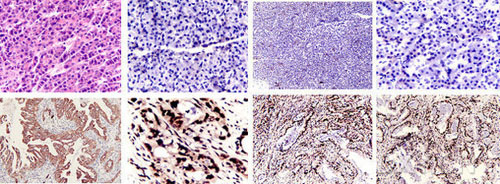
怎么做细胞爬片免疫组化染色实验
细胞爬片免疫组化染色,是通过细胞爬片是让玻片浸在细胞培养基内,细胞在玻片上生长,主要用于组织学,免疫组织化学...
2020/7/20 22:04:33
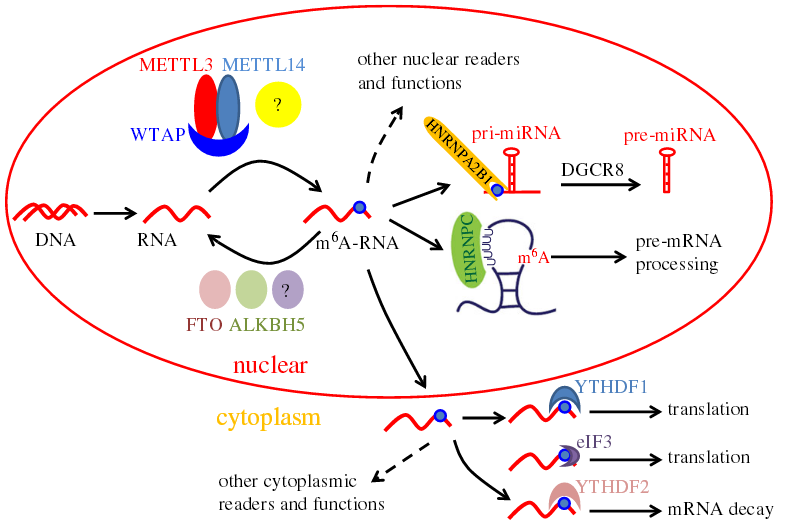
提取病毒RNA的实验方法
提取病毒RNA方法分别有:异硫氰酸胍的提取病毒RNA方法、TRIzol LS提取法、Trizol法提取法等等...
2020/7/22 20:29:26

Waxfilm 实验室封口膜:技术与国际市场的双重突破
在实验室耗材领域,封口膜是保障实验准确性与稳定性的关键产品之一。近年来,Waxfilm?实验室封口膜凭借其卓...
2025/5/13 13:03:40
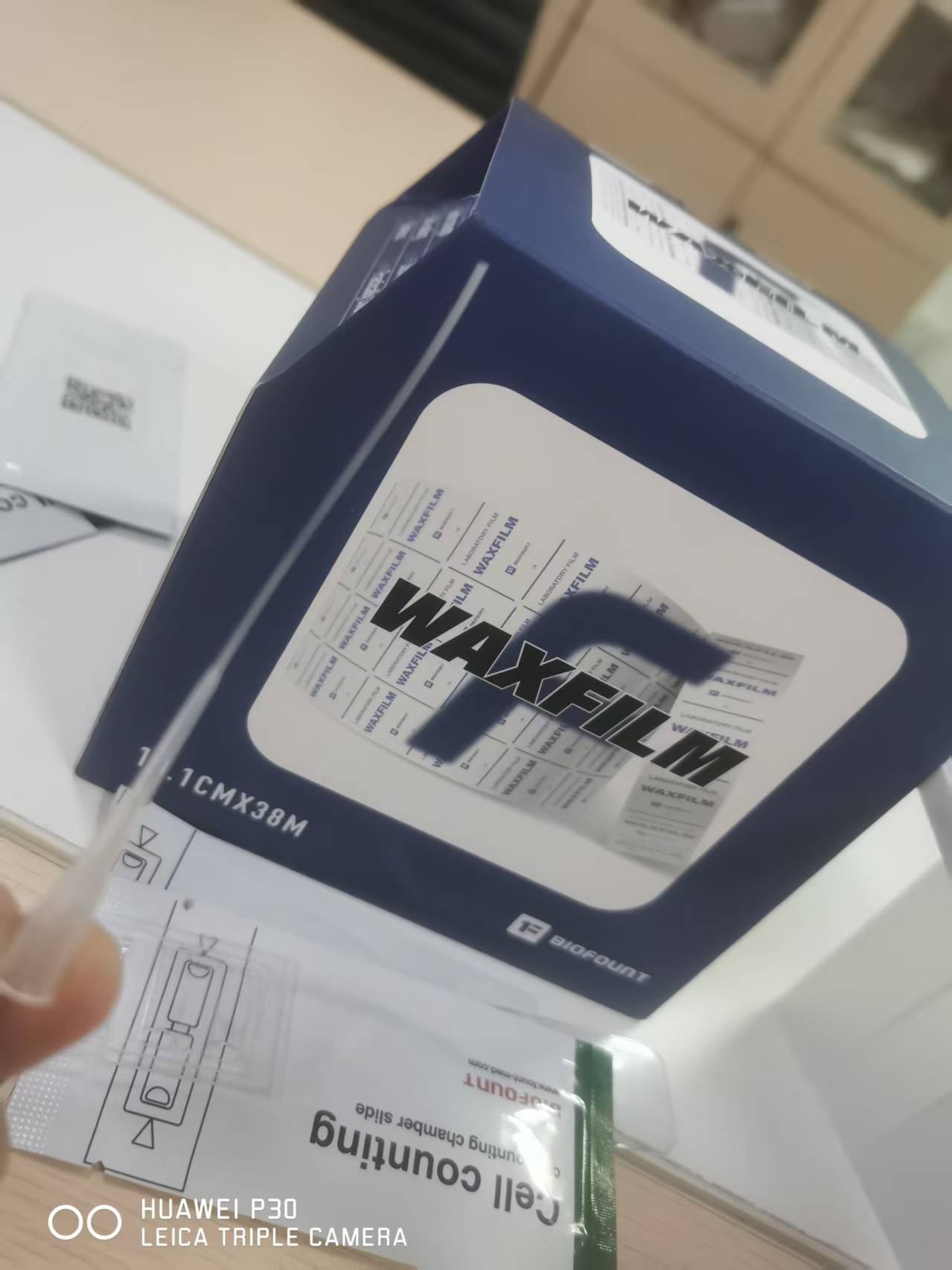
Waxfilm实验室封口膜的5大突破
Waxfilm实验室封口膜作为生物功能膜领域的国产技术突破和品牌突破,是生物领域中国技术发展的缩影。
2025/5/6 17:02:07
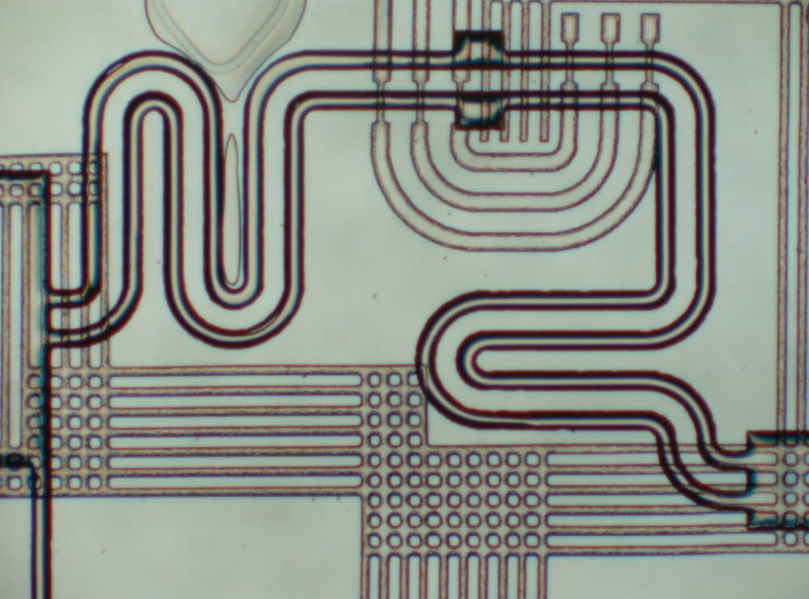
各种微流控芯片键合方法的优缺点
微流控芯片键合:目前主要有激光焊接、热压键合、胶键合、超音波焊接,每种方法都有各自的优缺点。本文主要介绍聚酯...
2023/7/28 10:43:09
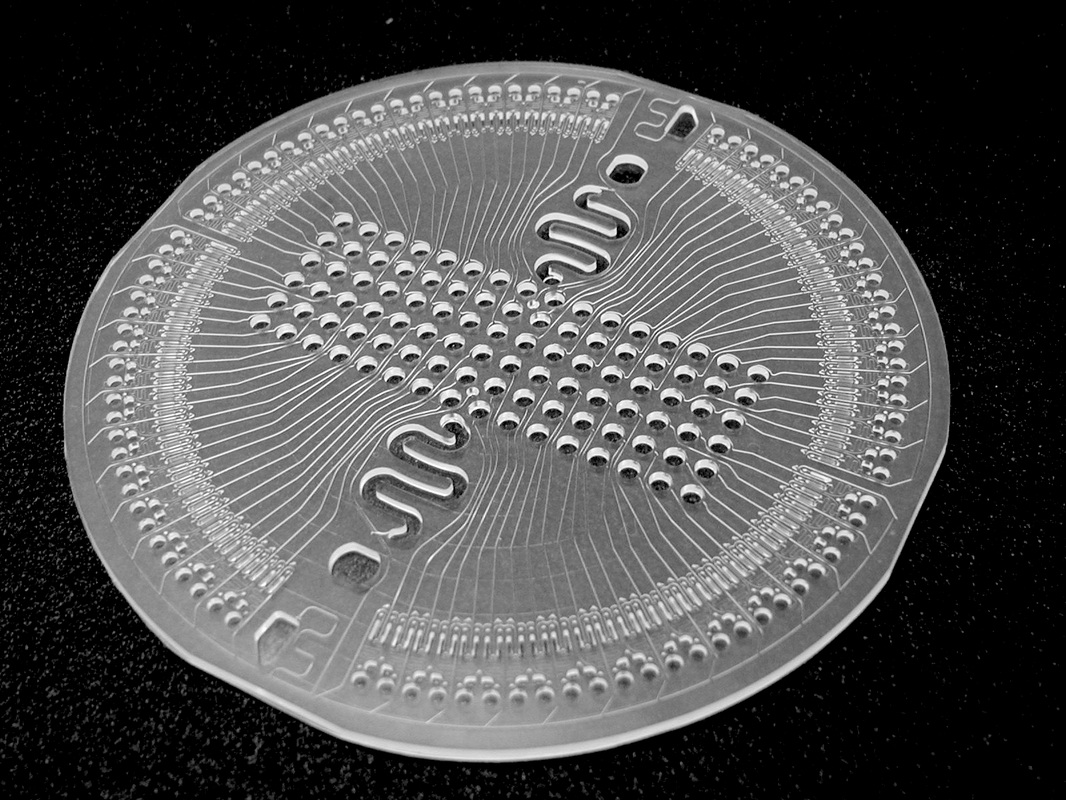
新一代微流控键合解决方案
微流控键合解决方案:微流控芯片制造的一个重要环节,也是最容易被忽视的--芯片键合。其中一个重要因素是:微流控...
2023/7/27 12:44:28
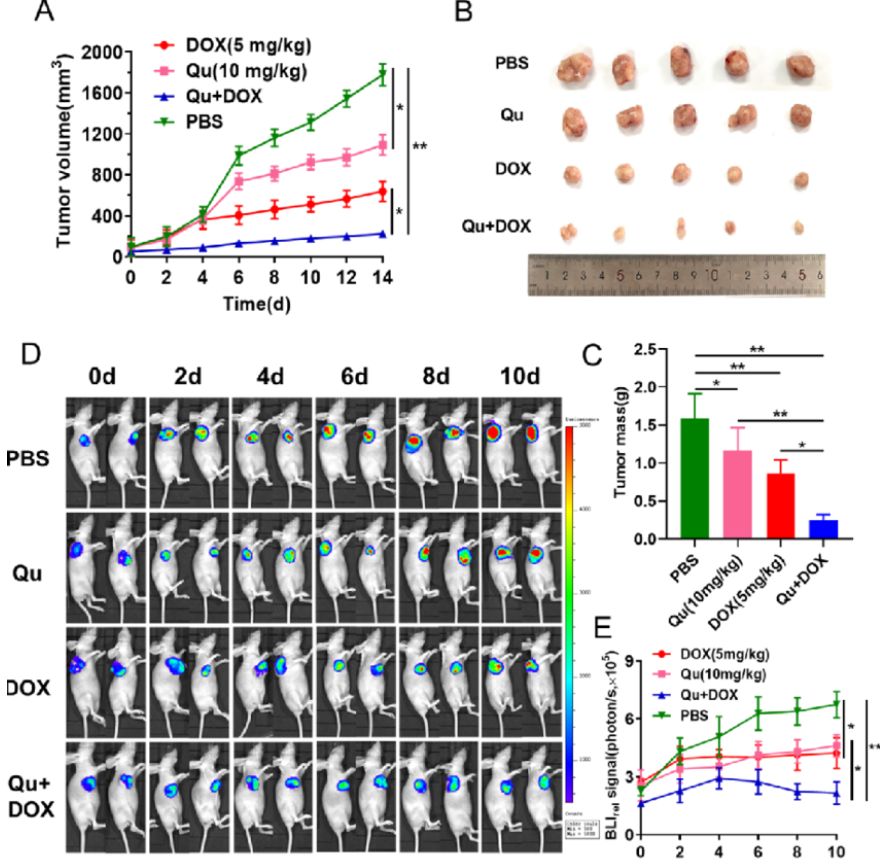
荧光素钾盐使用说明
D-荧光素钾盐(K+)设计用于体外和体内生物发光测定。D-荧光素的质量和纯度对于获得良好和可重复的结果至关重...
2023/7/20 11:05:11
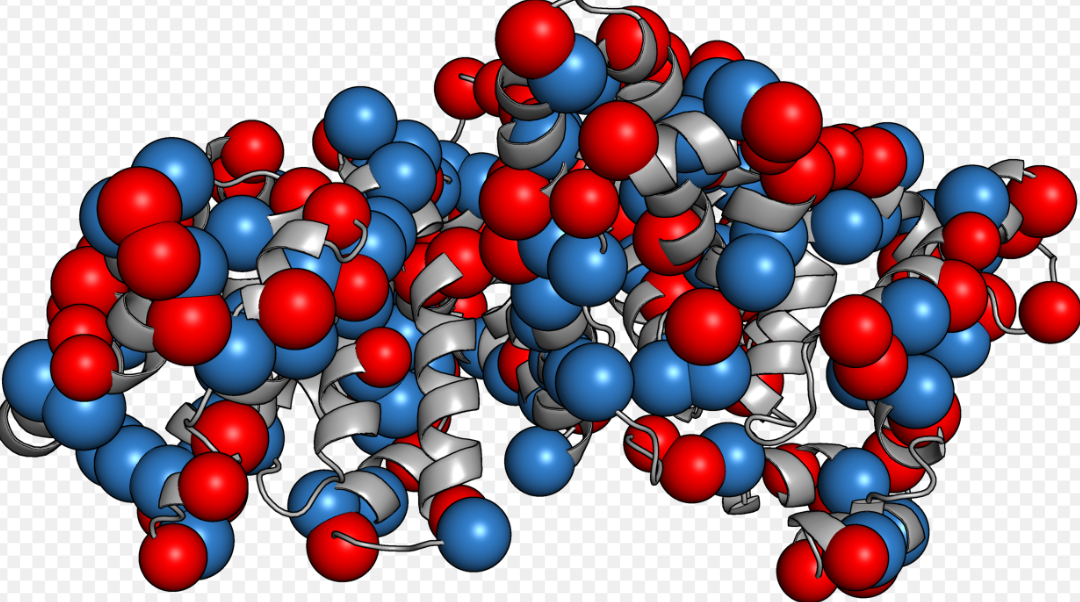
如何选BSA(牛血清白蛋白)
如何选BSA(牛血清白蛋白):牛血清白蛋白(BSA)有多种形式,如何选择适合自己的牛血清白蛋白(BSA)是一...
2023/2/14 13:09:18
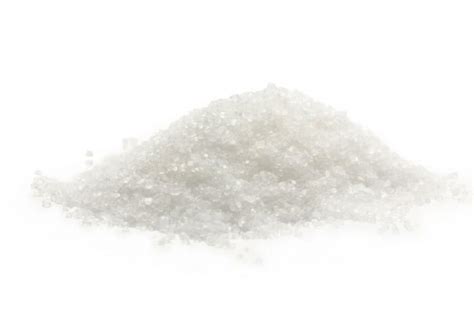
牛血清白蛋白(BSA)常见问题
牛血清白蛋白(BSA)常见问题:牛血清白蛋白(BSA)在实验室中是通用的,可用于蛋白质印迹、细胞组织培养、P...
2022/10/19 9:39:51
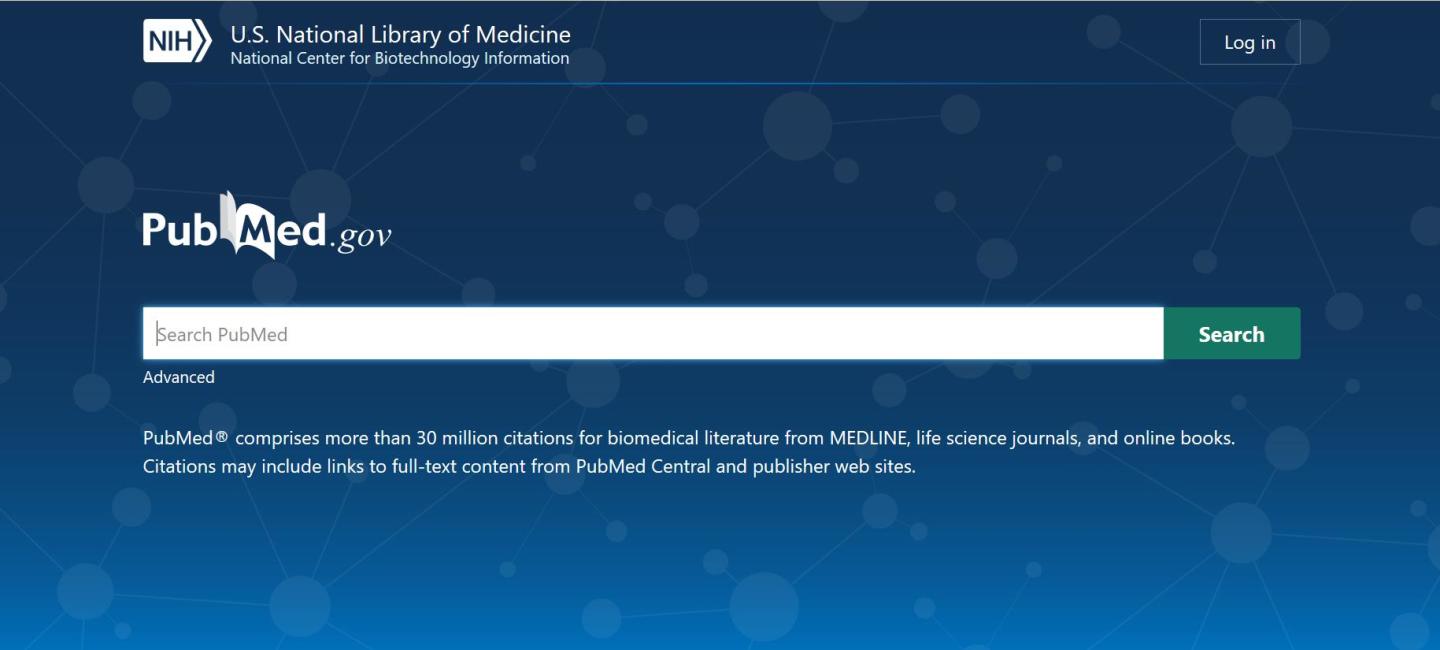
pubmed使用方法(技巧)
pubmed使用方法(技巧):PubMed是一个关于医学问题的学术文章和书籍的数据库。因为它是一份学术期刊,...
2022/10/18 18:06:07




 购物车
购物车 
